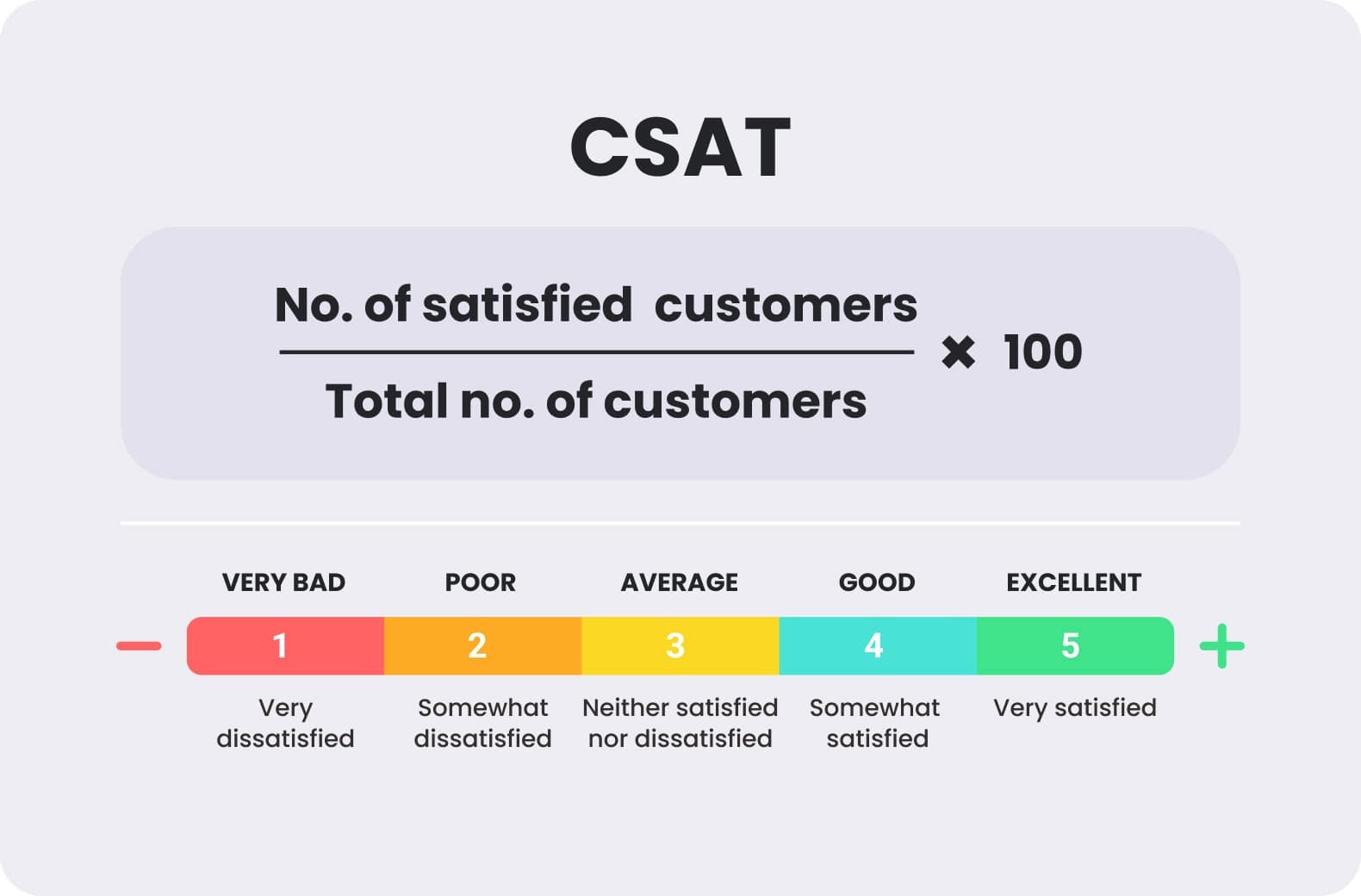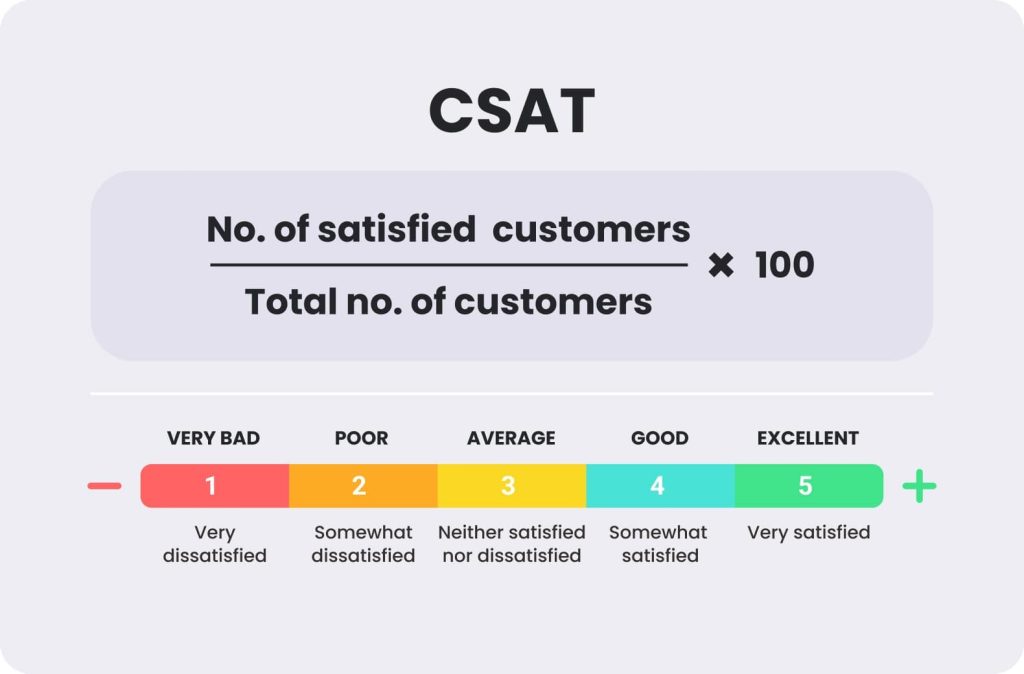
In the competitive landscape of modern business, customer satisfaction reigns as a paramount metric. More than just a semestral survey, Customer Satisfaction (CSAT) scores offer a window into the minds of your customers, shaping strategies for growth and retention. For business owners, customer service managers, and digital marketers, understanding and effectively utilizing CSAT measurements can mean the difference between market leadership and obscurity.
This comprehensive guide dives deep into the world of CSAT scores, providing actionable insights into why they matter, how to measure and improve them, the tools available, and real-world examples of success. Whether you’re a seasoned professional or just starting to recognize the importance of customer satisfaction, this resource has something for you.

What is a CSAT Score, and Why Does it Matter?
A CSAT score, short for Customer Satisfaction Score, is a direct reflection of how satisfied customers are with a company’s products, services, or experience. It is usually measured by asking customers to rate their satisfaction on a scale, typically ranging from “very unsatisfied” to “very satisfied.” This score is crucial because it provides immediate feedback on customer perception and identifies areas needing improvement. In today’s customer-centric business environment, a high CSAT score can significantly enhance brand loyalty, encourage positive word-of-mouth, and increase the likelihood of repeat business. It acts as a vital benchmark for assessing operational efficiency, customer service quality, and overall alignment with customer expectations.
Defining the concept of CSAT and unraveling its relevance to your business is the first step in this exploration. Customer Satisfaction (CSAT) Score is a key performance indicator used to measure a customer’s satisfaction level with your company’s product, service, or interaction. The score typically ranges from 0% (unsatisfied) to 100% (completely satisfied).
The Significance of CSAT
CSAT scores are crucial because they provide tangible data for assessing customer happiness. A satisfied customer is more likely to return, make additional purchases, and even advocate for your brand. Furthermore, high CSAT scores are indicative of a successful customer experience strategy, pointing to areas of strength and those needing improvement.
The Impact on Growth and Retention
In a world where acquiring a new customer costs five times more than retaining an existing one, understanding and improving CSAT scores is not just about keeping customers happy; it’s about sustaining and fostering growth. High CSAT scores lead to increased customer loyalty and, ultimately, higher revenue for your business.
How to Calculate Your CSAT Score
Calculating your CSAT score is straightforward and centers around one critical question: “How would you rate your overall satisfaction with the [product/service] you received?” Respondents are typically given a spectrum of options ranging from “very unsatisfied” to “very satisfied.” To calculate the percentage of satisfied customers, you tally the responses that fall under “satisfied” and “very satisfied,” divide by the total number of responses, and multiply by 100 to get the percentage. This formula provides a clear metric to gauge customer sentiment and satisfaction levels.
For example, if out of 100 responses, 80 respondents rate their experience as either “satisfied” or “very satisfied,” your CSAT score would be 80%. This simplicity in calculation makes CSAT a popular choice among businesses looking to quickly assess their performance from the customer’s perspective.
The Formula
The CSAT score is typically determined through a survey question with a 5 or 7-point Likert scale. To calculate the score:
- Total the number of positive responses (e.g., “Satisfied” or “Very satisfied”).
- Divide the total positive responses by the total number of responses.
- Multiply the result by 100 for a percentage.
Gathering CSAT Data
The crux of CSAT calculation hinges on collecting accurate and representative data. Whether you’re utilizing post-purchase surveys, customer reviews, or even social media mentions, the data collection process should be comprehensive and ongoing.
Analyzing the Data
The completion of data collection marks the beginning of the analysis. Look for trends, seasonality, and customer segments that might have different CSAT scores. By leveraging business intelligence tools and methodologies, you can uncover insights that guide actionable strategies.
Understanding Your CSAT Results
Understanding your CSAT results is critical for pinpointing customer satisfaction drivers and identifying areas for improvement. High CSAT scores generally indicate that your business’s products or services meet or exceed customer expectations. Conversely, low scores signify dissatisfaction and highlight areas that require attention and possibly, immediate action. Analyzing your CSAT data goes beyond simply noting the scores; it involves a deep dive into customer feedback, looking for recurring themes or specific comments that can inform your strategy.
To effectively leverage your CSAT results, segment the data based on various customer demographics, such as age, location, or purchasing behavior. This segmentation can reveal insights into different customer preferences and pain points, allowing for more targeted and impactful improvements. Furthermore, comparing your CSAT scores over time can help track the effectiveness of changes and initiatives, ensuring that your strategy evolves in alignment with customer expectations.
Engaging with customers following the survey also presents an opportunity to deepen relationships and demonstrate your commitment to their satisfaction. Follow up on negative feedback personally to understand the customer’s perspective and resolve their issues, which can convert dissatisfaction into loyalty. Similarly, positive feedback can be used to recognize and reward your team’s efforts, reinforcing practices that contribute to high customer satisfaction.
By integrating your CSAT results into your ongoing business strategy, you can maintain a dynamic and responsive approach to customer satisfaction, fostering a culture of continuous improvement and customer focus within your organization.
Benchmarking Against Industry Standards
A big part of understanding your CSAT score is benchmarking it against industry standards and competitor scores. This comparative analysis can provide a more comprehensive view of your position in the market.
Identifying Strengths and Weaknesses
CSAT scores can be dissected to identify which aspects of your business are satisfying customers most and which are falling short. This granular approach helps in directing resources to improve the customer experience effectively.
Predicting Customer Behavior
Analyzing CSAT scores can shed light on future customer behavior. Satisfied customers are less likely to churn and more willing to engage in repeat business and referrals.
Improving Your CSAT Scores
Improving your CSAT scores is a continual process that demands a proactive approach to customer feedback and a commitment to service excellence. Start by addressing any immediate issues highlighted by your customers, as these can have a significant impact on satisfaction levels. Regular training for your team on customer service best practices can help ensure every customer interaction is positive and effective. Additionally, leveraging technology to streamline and personalize the customer experience can greatly enhance satisfaction. This might include implementing chatbots for instant support or using customer relationship management (CRM) tools to tailor communications and offers.
Consistently soliciting feedback through surveys and other channels also allows you to gauge the success of your initiatives and understand evolving customer needs. Remember, the goal is to create a customer-focused culture that values feedback and is agile enough to adapt based on that feedback. Celebrate improvements in your CSAT scores as these are a testament to your organization’s dedication to its customers. Lastly, always look beyond the numbers to understand the story they tell about your customer’s experience. This holistic approach to CSAT improvement can help foster a loyal customer base and differentiate your brand in a competitive market.
Customer Service Excellence
Investing in customer service excellence is paramount. This includes training front-line staff, implementing robust support systems, and fostering a culture of customer-centricity within the organization.
Product and Service Enhancements
Regularly gathering feedback on products and services helps to identify areas for improvement. Making enhancements based on customer suggestions can significantly boost satisfaction.
Personalization and Proactivity
Personalizing the customer experience and being proactive in addressing customer needs demonstrate a commitment to excellence, which resonates with customers.
Tools and Technologies for Measuring CSAT
To effectively measure and improve customer satisfaction (CSAT) scores, leveraging the right tools and technologies is crucial. Advanced analytics platforms and customer feedback management systems can automate the gathering and analysis of CSAT data, providing real-time insights into customer sentiment. These tools enable businesses to swiftly identify areas requiring attention and track the impact of improvements over time.
Survey tools play a vital role in collecting CSAT scores, allowing for customizable questionnaires to capture specific feedback across various touchpoints in the customer journey. Integrating these surveys with your Customer Relationship Management (CRM) system can enhance the personalization of follow-ups based on individual customer responses and behaviors.
Social media monitoring tools also offer valuable real-time feedback that can affect CSAT. By actively listening to customer conversations online, businesses can gauge general sentiment, identify common issues, and even uncover opportunities for engagement and service recovery.
Finally, implementing a comprehensive dashboard that consolidates all CSAT-related metrics provides a holistic view of customer satisfaction levels. Such dashboards should enable the segmentation of data for deeper analysis and facilitate easy sharing of insights across the organization to inform strategy and decision-making.
Survey and Feedback Platforms
Survey and feedback platforms are indispensable tools for gathering customer feedback and measuring CSAT scores. These platforms offer a variety of survey types, including Net Promoter Score (NPS), Customer Satisfaction Score (CSAT), and Customer Effort Score (CES), allowing businesses to collect specific insights tailored to their needs. Features like customizable survey templates, automated distribution, and integration capabilities make these platforms highly efficient for capturing feedback across multiple channels, such as email, social media, and websites.
To maximize the effectiveness of surveys, it’s crucial to design questions that are clear, concise, and directly related to the customer’s experience. Additionally, timing the survey prompt strategically — such as immediately after a purchase or service interaction — can improve response rates and the relevance of the feedback collected. Analyzing the data gathered through these platforms can reveal actionable insights, helping businesses fine-tune their operations, enhance customer service, and ultimately, boost their CSAT scores. Engaging customers with follow-up actions based on their feedback not only shows that you value their input but also helps in building stronger relationships and loyalty.
Data Analytics Solutions
Data analytics solutions play a pivotal role in understanding and enhancing CSAT scores by transforming raw customer feedback into actionable insights. These tools analyze vast amounts of data to identify patterns, trends, and areas of improvement, enabling businesses to make informed decisions that directly impact customer satisfaction. Through the use of sophisticated algorithms and machine learning, data analytics can predict customer behavior, allowing companies to proactively address potential issues before they escalate. By integrating these solutions with CRM systems, businesses can create a more personalized and responsive customer experience. Furthermore, data visualization features help in understandably illustrating complex data sets, facilitating easier interpretation and communication of insights across departments. This not only helps in aligning strategies towards common goals but also ensures that efforts to improve customer satisfaction are based on solid, data-driven foundations.
Integrating Customer Relationship Management (CRM) Systems
Integrating Customer Relationship Management (CRM) systems with CSAT measuring tools creates a powerhouse for tracking and enhancing customer satisfaction. This integration allows businesses to have a 360-degree view of the customer, combining CSAT feedback with historical interaction data to offer a comprehensive profile. It enables personalized service delivery and targeted improvements based on individual customer feedback and trends observed over time. For instance, CRM systems can help identify high-value customers who may have reported lower satisfaction scores, prompting immediate action to address their concerns and prevent churn.
Effective integration facilitates the automation of follow-up communications based on specific survey responses, making the process of closing the feedback loop more efficient. Furthermore, CRM systems equipped with AI and machine-learning capabilities can help predict customer needs and satisfaction levels, empowering businesses to proactively make adjustments to their products, services, and customer engagement strategies. This proactive approach to managing customer relationships underscores a commitment to not just meeting, but exceeding, customer expectations, reinforcing loyalty, and fostering long-term relationships.
Real-World Case Studies
To illustrate the practical application and benefits of diligently focusing on CSAT scores, several real-world case studies can be highlighted. For instance, a major retail company implemented a comprehensive strategy to improve customer satisfaction. This included training for staff on empathy and customer handling, revamping their return policy to be more customer-friendly, and introducing a state-of-the-art customer service chatbot. Within six months, they reported a significant increase in their CSAT scores, leading to a noticeable upsurge in repeat business and positive word-of-mouth referrals.
Another example comes from a tech start-up that decided to integrate its CRM with a sophisticated analytics platform. By doing so, they were able to personalize the customer experience at an unprecedented level. They utilized customer feedback to tailor their services more closely to customer needs. The result was not only higher CSAT scores but also an increase in customer lifetime value.
Both of these case studies exemplify how focused efforts on improving CSAT can directly contribute to a company’s success, driving customer loyalty and fostering a competitive edge in the market.
Conclusion and Next Steps
In conclusion, emphasizing customer satisfaction offers a strategic advantage in today’s competitive business environment. Investing in staff training, implementing advanced technologies, and fostering a culture that prioritizes customer feedback is key to elevating CSAT scores. By continuously monitoring these scores through comprehensive tools and adapting based on customer feedback, businesses can significantly enhance their service quality and customer loyalty.
Moving forward, organizations should prioritize integrating feedback mechanisms into every customer interaction touchpoint and leverage analytics to drive strategic decisions. Establishing clear benchmarks for CSAT and regularly reviewing these metrics will ensure that customer satisfaction remains at the forefront of business operations. Additionally, companies should consider the rapidly changing landscape of customer expectations and be willing to innovate and adapt their approaches accordingly.
To truly excel, businesses must view every customer interaction as an opportunity to impress, engage, and understand their needs better. It’s this commitment to excellence and continuous improvement that will define the market leaders of tomorrow.




